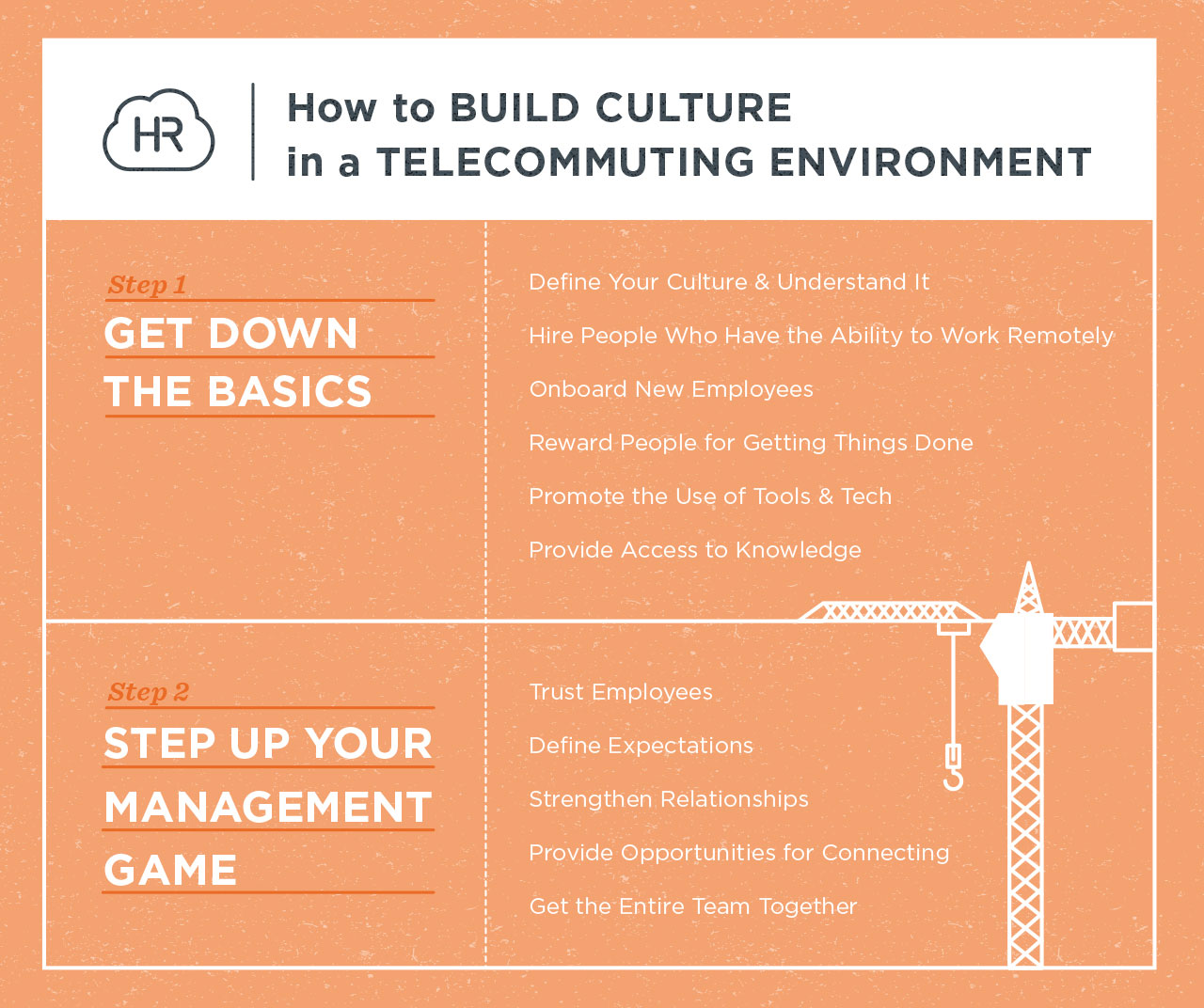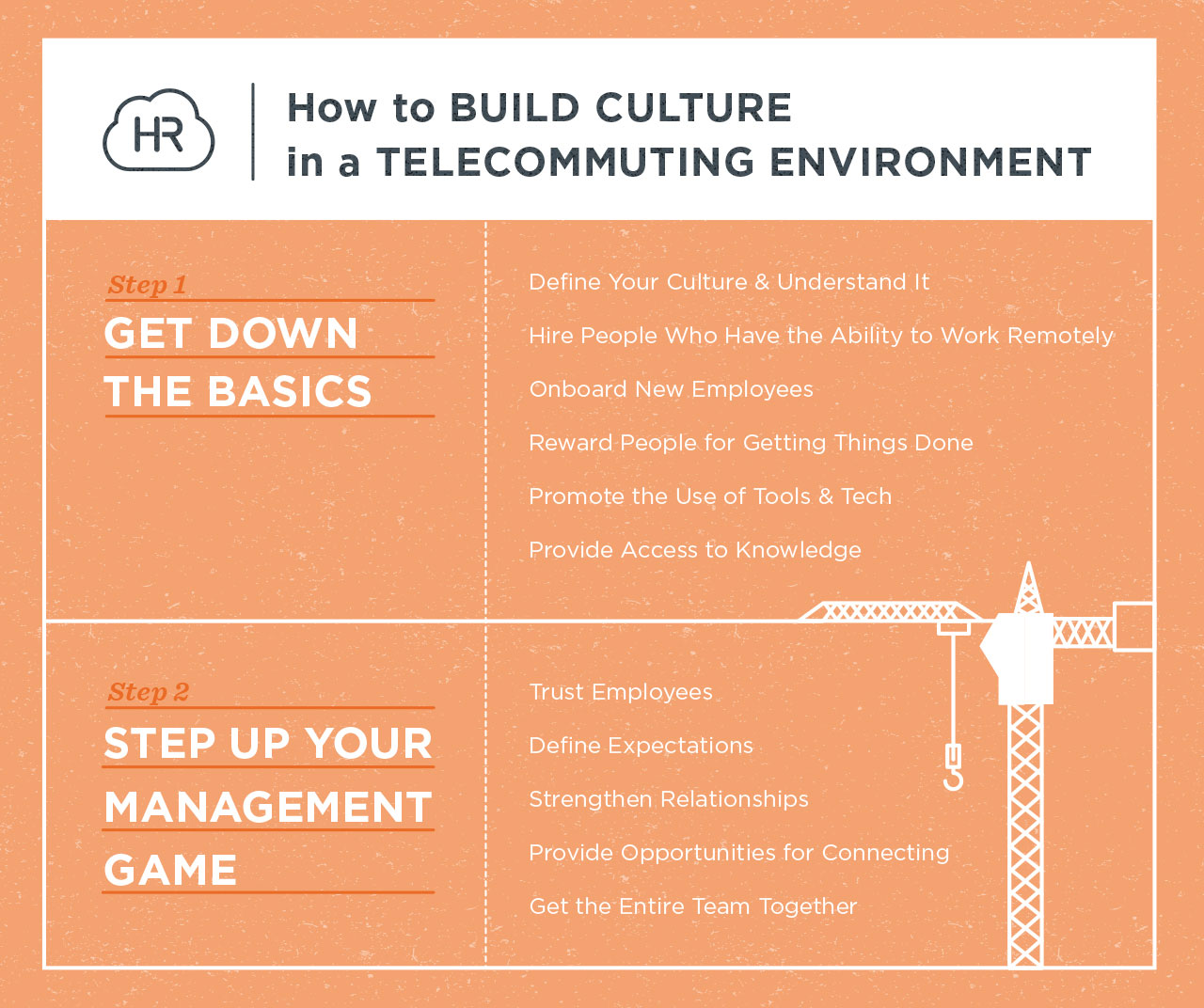Nearly 3% of the US workforce telecommutes. That might not sound like much but telework grew a whopping 80% from 2005 to 2012. Whoa! As the number of telecommuting employees grows, how has that that affected your company culture?
Your culture, after all, is more than a collection of words, pictures, or dress-down days. It’s a living and breathing entity that includes things like actions, thoughts, traditions, and environment.
Yet even if your employees are working from homes, coffee shops, or scattered satellite offices, you can take to action to build unity, create constancy of purpose, and reinforce cultural cohesion.
The Basics
Define Your Culture and Understand It. First, you must understand and define your culture. What adjectives describe the reality of working for your organization? How are you communicating that message to candidates, applicants, employees and other stakeholders? If one of your organizational values is “open communication,” do you have a supportive environment that provides the tools and resources that enable communication? Do you reward the behaviors associated with open communication?
Hire People Who Have the Ability to Work Remotely. Hiring people who have the ability to work remotely is critical. Many people will have the desire, but you must be able to determine their potential effectiveness as well. Take the time to define, articulate, and hire for the personal attributes that often make people successful in remote work situations such as self-motivation, flexibility, and the ability to focus.
Onboard New Employees. In a telecommuting environment, onboarding new employees takes on increased importance. You may need to be somewhat flexible and adaptable as your process evolves. The ease of using technology makes many aspects of onboarding a breeze, but you also need to assess your plan regularly. You may find opportunities to improve after each new hire.
Reward People for Getting Things Done. It’s important to think about cultural issues related to pay and your compensation philosophy. With remote workers you want to reward people for getting things done not and not merely for ‘showing up.’
Promote the Use of Tools and Technologies. Make sure to promote the use of tools and technologies that encourage a sense of community. This can range from basic instant messaging tools, creating a closed Facebook group for employees, or using collaboration tools.
Provide Access to Knowledge and Assistance for Remote Workers. Give team members access to tools like online company directories and virtual networks. Consider where you will ‘store’ the information that employees need to do their jobs on a daily basis.
The Role of Managers
Trust. Trust is key as managers must learn to focus on “what” gets done as opposed to when, where or how it’s accomplished. HR leaders should provide training, guidance, and clear expectations for what may be a ‘new’ way of managing.
Define Expectations. There must be clearly defined expectations regarding employee availability. Are remote workers expected to be available 24/7 (via phone or text)? Or are there office hours and people are free to shut it down after 6pm?
Strengthen Relationships. Managers should hold check-ins with remote workers. This check-in might be a quick instant messaging session or a 10-minute phone call each day. The goal is not just about checking up on task completion, but should be concentrated on strengthening relationships, seeking input, and reinforcing personal connectivity.
Provide Opportunities for Connecting. Weekly team meetings are still a great idea and can provide opportunities for connecting. In addition, managing a remote team provides opportunities to ‘rethink” the format. Telecommuters can use Skype or get together on Google Hangouts, face-to-face, or virtually for a more personalized experience than listening to disembodied voices on a conference call.
Get the Entire Team Together. Managers should commit to getting the entire team together, in person, several times per year. The costs for this should be budgeted for remote workers because it will strengthen their attachment to their co-workers and the employees “back at headquarters”.
There are other touch points that reinforce your company culture that can be implemented even among a workforce with lots of remote workers. Consider holding events (staff birthday parties or employee-of-the-month celebrations) in a virtual environment or via live streaming. When working as a member of a remote team, I attended baby showers for co-workers and a holiday party complete with gift exchange (gifts were pre-shipped). Those moments reinforced both the personal and professional attachments I had to my co-workers.
Remember, the unique differentiators of your organization are the people and the culture. You don’t have to be in the same physical space to realize the power of both!
Keep Reading
Upskilling and Reskilling: Preparing the Workforce for a Tariff-Impacted Economy
Recent shifts in global trade policies have led to a new wave of tariffs impacting
Retention Reset: How to Keep Your Best Talent in 2025
More employees are walking away from their jobs in 2025 not just for better pay, but for



